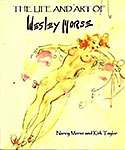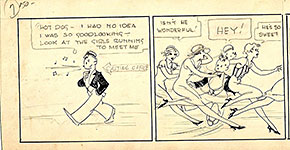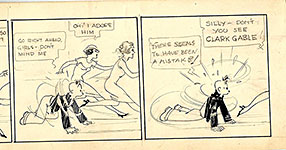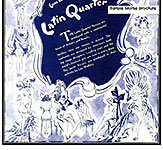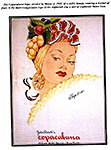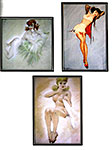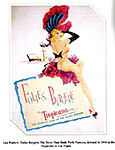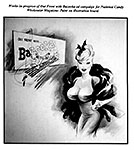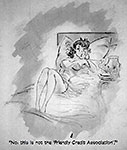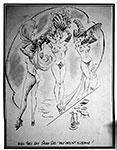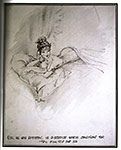 |
||||||||||||||||||||
Opus 348 (February 7, 2016). It’s that time of year. Or it was, a month ago. A time for reflecting upon the doin’s of the last twelve months, but, like a pivot, one year’s end is the next year’s beginning—hence, January, named after the two-faced Roman god Janus, who looked both forward and backward. So we’ll spend a few moments this time looking forward (at the caricatures of the future Election Year) as well as looking back at the Most Momentous Moments of 2015. By the time you read this, New Hampshire will, once again, be history, but it hasn’t happened at the time we quit preparing this opus for posting, so you’ll have to wait for that. In the meantime, you can ponder our reviews of Ted Rall’s Snowden (biography or politics?) and a reconsideration of Cliff Huxtable and Bill Cosby, who is being slowly crucified by the misguided Social Media. We also report on women cartoonists being ignored in Angouleme’s Grand Prix nominations, and while reviewing the history of women in cartooning, we offer two brand new names, resurrected from the 18th and 19th centuries. We report the ending of the comic strip Edge City and the cross-over between Dick Tracy and On the Fastrack (mentioning also the two other daily strips Bill Holbrook does). And we review the Wesley Morse biography (now in hand) and Bazooka Joe and His Gang, answer the question “Who is Ally Sloper” and wonder who the hell David Bowie is and how he could have escaped our notice all this time. Here’s all of what’s here, in order, by department—:
NOUS R US Farghadani Acquitted of Illegitimate Relations Graphic Novel Sales Up “Bordertown” Begins Stan the Man Losing Eyesight Zunar’s Statement Eustace Tilley’s Crude Sex Appeal? Another Diversity War: Women Cartoonists at Angouleme Women in Comics: Ally Sloper Charlie a Year Later
Odds & Addenda NBM at Forty Gets New Logo Barbie Gets Make-over January 7: Cartoonists Day in Scotland MetLife to Abandon Snoopy?
EDITOONERY Iowa Comedy Reviewing the Year 2015: Top Stories in Editoons Saudi Arabia and Iran Have Too Many Beheadings Social Media Misguided on Cosby Editoonists Explain Caricatures for 2016
EDGE CITY ENDS Insights and Explanations
FUNNYBOOK FAN FARE Patsy Walker aka Hellcat—AWFUL Flaws in New Yorker Cartoons
NEWSPAPER COMICS PAGE VIGIL Events in the Funnies Nifty Cross-over: On the Fastrack & Dick Tracy Bill Holbrook’s Trio of Daily Strips
BOOK REVIEWS The Life and Art of Wesley Morse Bazooka Joe and His Gang
LONG FORM PAGINATED CARTOON STRIPS Snowden Graphic Novel
PASSIN’ THROUGH Jack Elrod Bob Elliot Dave Bowie??
QUOTE OF THE MONTH If Not of A Lifetime “Goddamn it, you’ve got to be kind.”—Kurt Vonnegut
Our Motto: It takes all kinds. Live and let live. Wear glasses if you need ’em. But it’s hard to live by this axiom in the Age of Tea Baggers, so we’ve added another motto:.
Seven days without comics makes one weak. (You can’t have too many mottos.)
And our customary reminder: don’t forget to activate the “Bathroom Button” by clicking on the “print friendly version” so you can print off a copy of just this installment for reading later, at your leisure while enthroned. Without further adieu, then, here we go—:
NOUS R US Some of All the News That Gives Us Fits
Farghadani Acquitted on “Illegitimate Relations” Charge Reported at iranhumanrights.org, January 25, 2016, by Maren Williams Iranian cartoonist Atena Farghadani, currently serving a nearly 13-year prison sentence for caricaturing members of parliament as animals, has been spared even more prison time as she was recently acquitted of “non-adultery illegitimate relations.” That charge was brought after she shook the hand of her lawyer Mohammad Moghimi when he visited to discuss her case. Contact between unrelated members of the opposite sex is technically illegal in Iran, but rarely prosecuted. Moghimi was also charged and acquitted; both parties could have received sentences of up to 99 lashes if convicted. Amnesty International learned in October that in the course of the “investigation,” Farghadani was subjected to pregnancy and virginity tests against her will. The latter test is carried out by physically checking for the presence of a hymen, and is recognized by the World Health Organization as a form of sexual violence. In addition to the government-sponsored assault, Farghadani also reports that she has been the target of “lewd gestures, sexual slurs and other insults” from prison guards and officials since the “illegitimate relations” charge was introduced in June. Farghadani’s mother Eshrat Ardestani told the International Campaign for Human Rights in Iran that “my daughter was mentally crushed by this accusation but she’s very happy since she heard about the acquittal.” However, there is still a possibility that prosecutors could appeal the verdict. Farghadani is also awaiting a verdict on her appeal of the charges that landed her in prison in the first place, including “insulting members of parliament through paintings” and “spreading propaganda against the system.” Her cartoon mocked Members of Parliament as they debated a bill to ban voluntary sterilization procedures such as vasectomies and tubal ligations in an effort to reverse Iran’s falling birthrate. But even before her arrest, she was already well-known to the government for her fearless advocacy on behalf of political prisoners, Baha’i minorities, and the families of protesters killed after the country’s presidential election in 2009.
BETTER THAN 2014 Diamond Book Distributors, the book trade unit of Diamond Comics Distributors and one of the largest distributors of graphic novels and pop culture merchandise to bookstores and the school and library market, reports that 2015 was the “second best year” in the history of DBD. Better than the somewhat lack-luster 2014. “And we expect 2016 to be our best year ever” DBD vice president Kuo-Yu Liang told Calvin Reid at publishersweekly.com. The graphic novel market overall is improving: U.S. graphic novel print unit sales rose 22% in 2015 over 2014, according to Nielsen Bookscan, which reports on sales in about 80% the bookstore market. “Last year was very good. And our sales were not driven by any one title or publisher but by everything, a wide range of titles and genres,” Liang said. Reid reports that among the big sellers for DBD publishers in 2015 were the Saga series, Walking Dead compendiums, March Books One and Two, and kids series such as My Little Pony, Grumpy Cat, and Princeless. Liang credited the growth to a wide variety of popular titles and a supportive and stable retailing sector in 2015. “We had a year of great books in 2015 and an overall robust retail environment,” he said. He also emphasized the continuing growth of new bookstore customers curious about the buzz around graphic novels. “Consumer interest in graphic novels keeps rising. That’s been a trend over the last 10 years,” Liang said, noting the impact of demands for diversity. “And there were lots of new customers—including women and minorities—asking about graphic novels in bookstores. The more people talk about graphic novels, the more people want to try one out.” The diversification of genres beyond the superhero category is also a big factor, Liang added. “There’s a graphic novel for everyone these days, crime, romance, adventure, kids books,” he said. “And graphic novels are now sold in museums, parks, the Smithsonian, and colleges. They’re sold in so many places beyond just bookstores.”
IMMIGRATION COMEDY The timing may be a little off—maybe it would have been better to have debuted just as The Donald began trumpeting about Mexican rapists and murderers surging across the border—but “Bordertown,” the animated prime-time series created by “Family Guy’s” Mark Hentemann and produced by FG’s Seth MacFarlane (with La Cucaracha’s Lalo Alcaraz as a consultant), began in January on Fox. From a review that came over the Internet transom —: If you thought the political debate over immigration has devolved into a cartoon, “Bordertown” finishes the job. This animated sitcom on Fox is as subtle and amusing as a brick border wall. In the Southwestern town of Mexifornia, a Border Patrol agent, Bud Buckwald (Hank Azaria of “The Simpsons”), works ineptly to secure the national boundary and his own sense of primacy in his country. His next-door neighbor Ernesto Gonzalez (Nicholas Gonzalez) laughs off Bud’s casual racism, but tensions are about to rise as Mexifornia considers a draconian anti-immigration bill. As in the political diatribes, “Bordertown” casts both sides in extremes. There are the Hispanic caricatures, like the tot at a barbecue who spikes Bud’s food with a blazing hot chili pepper from a bag marked Extra Caliente. There are the white caricatures, like Bud’s 5-year-old daughter, Gert (Missi Pyle), a pageant contestant who, for some reason, has a pronounced Honey Boo Boo Southern accent. Nearly everyone, white and brown, is drawn in a similar bulbous avocado shape. Like MacFarlane’s other animated shows, “Bordertown” aspires to the issues-based comedy of Norman Lear. When Becky gets engaged to Ernesto’s liberal nephew, J. C. (Mr. Gonzalez), it feels like a tribute to the Archie-versus-Gloria-and-Meathead sparring of “All in the Family.” But despite the show’s apt timing, the satire gets swallowed up by the hyperactive joke engine. There are so many cutaway gags that the show feels bored with itself. The social humor is curdled and mean, and the non sequitur jokes — like a visit to “Goofy’s rape room” at a knockoff version of Disneyland — play like “Family Guy” outtakes. The show’s most distinctive, slapstick running joke imagines the border battle as a Looney Tunes cartoon, where the roadrunner is a coyote: El Coyote, a wily immigrant smuggler who frustrates Bud’s elaborate attempts to capture him. (One involves a giant-spring contraption that might as well have ACME stamped on it.) It’s pointedly silly stuff, but also a sign of the anarchic comedy “Bordertown” could be if it could escape the shadow of Peter Griffin, the father on “Family Guy.” As it is, the show may appeal to “Family Guy” die-hards, but mostly gives viewers of all persuasions cause to run from the border.
“THE MAN” CAN’T READ COMICS ANYMORE Stan Lee says he can no longer read comics. Interviewed by radiotimes.com, 93-year-old Lee said: “My eyesight has gotten terrible and I can’t read comic books any more. The print is too small. Not only a comic book, but I can’t read the newspaper or a novel or anything. I miss reading 100 per cent. It’s my biggest miss in the world.” Lee has come a long way from the man who was once ashamed of his medium. “When I was young, I was embarrassed to tell people that I wrote comic books,” he admits. “I even changed my name because people hated them so much. My name used to be Stanley Martin Lieber. I was saving it for the great American novel, which I never wrote.” Still, he is clearly immensely proud of his legacy, and his sight difficulties haven’t stopped him from continuing to produce and create adventure stories.
ZUNAR STATES HIS CASE The persecuted Malaysian cartoonist Sukhbir Cheema, aka Zunar, made his case in an opinion piece published online by the Washington Post January 1; in print on January 3. Excerpts—: I’m a cartoonist in a country where cartooning can be a crime. Under my pen name, Zunar, I expose corruption and abuses of power by the Malaysian government. As it happens, I have a good deal of material to work with. For instance, Prime Minister Najib Razak is currently facing questions about a $700 million “donation” made to his personal bank account. Last February, police raided my home in the middle of the night and hauled me off to jail. I was handcuffed for eight hours and thrown into a cell with all the other criminal suspects. I managed to avoid telling my cellmates what I was in for: using Twitter. I was accused of sedition over a series of tweets I sent out opposing the jailing of a prominent Malaysian opposition leader. Now I’m facing nine charges under my country’s archaic, colonial-era Sedition Act, which could result in a 43-year prison sentence . The court proceedings against me begin this month. ... The legal assault against me is nothing new, but it marks a major escalation. The authorities have repeatedly sought to silence me. My office has been raided multiple times since 2009, and authorities have confiscated thousands of my cartoon books. In 2010, five of my books — including “1 Funny Malaysia” — were banned by the home affairs minister, who declared the contents “detrimental to public order.” Later that year I was detained by police and locked up for two days after the publication of “Cartoon-O-Phobia.” To say the least, the Malaysian government has no sense of humor. In late 2014, my webmaster was called in for questioning, and three of my assistants were arrested for selling my books. I was also brought in for questioning by the police, and the company that processes orders for my website was forced to disclose my customer list. In January, the police raided my office and then opened two investigations in February under the Sedition Act. That’s when they really threw the book at me. The government hasn’t just targeted me and my associates; it also has cracked down on the entire ecosystem of free expression. Three companies that printed my books were raided and warned not to print my books in the future or their licenses would be revoked. Likewise, bookstores that carried my book were raided and their licenses were threatened. As a result, no one dares print or sell my books. In such an environment, people like me must turn to the Internet to share our opinions and art. But now that space is under attack as well. Twitter chief executive Jack Dorsey recently proclaimed that the platform is a bastion of “freedom of expression” and speaking “truth to power.” With my personal slogan of “How Can I Be Neutral, Even My Pen Has a Stand,” I embrace his vision. The reality, though, is quite different. If a person can face sedition charges for stating a belief in 140 characters or less, then there is no freedom of expression. The Malaysian Sedition Act is incredibly broad, banning any act, speech or publication purported to bring contempt against the government or royal sultans. In 2012, Najib pledged to repeal the act because, he said, it “represents a bygone era.” He’s since reversed course and moved to strengthen it. I’ve been charged with one count of sedition for each supposedly seditious tweet. I could successfully fight one, or maybe two, counts, but nine counts and a potential 43-year prison sentence make clear that the government wants to make an example of me. I need help from people around the world who share my commitment to freedom of expression. Amnesty International is highlighting my case as part of its Write for Rights campaign, the largest human rights effort on the planet. You can personally write to Prime Minister Najib and call on his government to drop the charges against me and to abolish laws like the Sedition Act that squelch freedom of expression. Public pressure from around the globe can make a big difference in my case and beyond. I hope you’ll join with me to take a stand. RCH: Zunar stays away from Malaysia these days: he spends most of his time traveling in Europe and the U.S., promoting free expression.
EUSTACE TILLEY’S CRUDE SEX APPEAL The anniversary issue of The New Yorker has always carried as its cover the image of Eustace Tilley, who, drawn by the magazine’s founding art director, Rea Irvin, appeared on the cover of the first issue, February 21, 1925. The image was repeated every year thereafter—probably, as one-time cartoon editor Lee Lorenz once told me, because no one could think of any appropriately celebratory alternative image. (For the Whole History of Eustace Tilley, see Harv’s Hindsight for March 2015.) And then along came the editorial reign of Tina Brown, who, we suppose, set about deliberately to alter the magazine’s reality, and, with the 1994's anniversary issue, offered a variation—namely, Robert Crumb’s portrait of a modern-day boulevardier, a slacker and layabout with his baseball cap on backwards. Since
then, the Irvin image of Tilley has appeared occasionally, and alternative
images have also appeared. The “riff”? The scourge of ‘manspreading’”? Never heard of it? Probably that means you are not a resident of New York or of any other large city with its own public underground transportation system. I’d never heard of manspreading, but apparently it runs rampant, particularly noted and objected to by women. At Breitbart (a right-wing site), writer Milo Iyannopoulos explains (in italics)—: Witness the absurd, offensive, ludicrous spectacle of inanity and stupidity currently surrounding the New York subway: a campaign to stop men sitting comfortably on public transport. We “manspread,” apparently, which observers have interpreted as “sitting in such a way as not to painfully crush the testicles or penis” but which feminists insist is an expression of patriarchal authority. You could not, as British newspaper columnists like to say, make this shit up. ... The manspreading complaint is couched as a response to “rudeness” by men, but it is no such thing: it is pathetic feminist pipsqueakery, the last dying gasp of a movement with nothing to win and nothing to say, determined to abuse and antagonize the male sex at all costs and for whatever perceived or outright imaginary infraction it can conjure from the vicissitudes of everyday life. It is offensively trivial, and those associated with it ought to be ashamed. ... Such people include the author of a New York Times story on this otiose playground jihad against men, and the subway officials who endorsed a poster campaign warning men of the social anxiety caused by their choice of sitting position. Not a word about those shopping bags, or—the real irritant for me—stilettoes digging into the backs of my heels and capacious handbags clogging the gangways. Iyannopoulos’ diatribe (from which I’ve quoted only a few paragraphs) appeared over a year ago (December 22, 2014), but apparently the complaint about manspreading persists—albeit without my knowing much about it. A couple women I know whose opinions I value have objected to manspreading, without, however, using that term. And their objection has nothing to do with subway seating. They see the posture as a not very subtle male advertisement, promoting a man’s genitalia—his masculinity. One of my women acquaintances even saw the posture as a crude attempt at seduction. Since The New Yorker’s art director, responsible for selecting cover art—Francoise Mouly—is female, I wonder to what extent—if at all—she shares this strange and wonderful opinion. She doubtless subscribes to the notion that manspreading is a bullying attempt to take more seating space on a subway train than one should. But I wonder about the rest of it—the covert (but blatant) exposing of male crotch as seduction. Is the cover about seating or sex? Probably—alas for scandal and sensation— the former. If the latter, wouldn’t Tilley have a bulge in his britches in just the right spot?
ANOTHER DIVERSITY WAR The diversity wars broke out in Angouleme, France. Just as the Oscars this year have been marred by the failure of the Academy of Motion Picture Arts and Sciences to include any people of color among the acting nominees for the golden statuette, so has Europe’s most prestigious festival of cartooning failed to come up with any women among the 30 cartoonists nominated for the Grand Prix. And so up went the boycott barricades. Usually, reported Laurenn McCubbin at theguardian.com, there are “at least a few women on the long list for the Angoulême International Comics Festival (known in French as the Festival international de la bande dessinée or FIBD).” This year, nothing. But last year, the list included only Marjane Sartrapi. “In fact, in the festival’s 43-year history, there has only been one female Grand Prix winner: Florence Cestac, who got the prize in 2000.” Not even Claire Brétecher, pillar of the 9th Art, has ever received the Grand Prix. She was awarded the “10th Anniversary Prize” in 1983 (a prize which does not prevent its winner from qualifying for the Grand Prix as well). “But this year,” McCubbin said, “there was a swift reaction” to the snubbing of women cartoonists. Inspired by the French group BD Égalité, or Women in Comics Collective Against Sexism, some nominees on the list immediately protested by dropping out of consideration. Bestselling French cartoonist Riad Sattouf (The Arab of the Future) was the first to demand that his name be withdrawn from contention, reported Calvin Reid at publishersweekly.com. Other French cartoonists—among them Milo Manara, Joann Sfar, Pierre Cristin, Etienne Davodeau and Christophe Blaine—quickly followed. A number of American cartoonists who were also nominated, such as Chris Ware, Charles Burns and Dan Clowes, joined the French boycott and asked to be removed from the list. Sattouf on Facebook listed a number of female cartoonists he would "prefer to cede my place to", including Rumiko Takahashi, Julie Doucet, Anouk Ricard, Marjane Satrapi and Catherine Meurisse. Said Clowes in a statement released by his publisher, Fantagraphics: “I support the boycott of Angoulême and am withdrawing my name from any consideration for what is now a totally meaningless ‘honor.’ What a ridiculous, embarrassing debacle.” The Grand Prix d’Angoulême is the festival's lifetime achievement award, and highest literary honor. With the prize comes the distinction of being president of the festival the next year with a full exhibition of one’s works, extensive media attention and, in most cases, a boost in big book sales. American honorees have include Will Eisner, Robert Crumb, Bill Watterson and Art Spiegelman. In response to the boycott, festival organizers initially offered to add six women to the list of nominees. Then the FIBD withdrew the list completely, declaring that academy members could vote for whomever they chose, and the festival would “submit to the absolute free will” of its members. The new nomination process did little, though, to halt the chorus of voices that spoke out against the prize. By the time the FIBD convened at the end of January, three artists had been named as finalists— Hermann Huppen, renowned comics writer Alan Moore, and the much-admired if lesser-known illustrator Claire Wendling. All initially declined to accept the award. Hermann, who has been nominated multiple times for the award, was ultimately persuaded to accept the prize, Reid reported, though the entire episode seems to have devalued the award's standing. Hermann. In the U.S., Hermann’s post-apocalyptic science-fiction series Jeremiah is published by Dark Horse. Reid continued: “Aside from the troubles the show had with the Grand Prix, Angoulême remains an extraordinary show. Taking over the historic medieval-era city of Angoulême completely, the programs and exhibitions seemingly occupy every venue in the city. And, unlike American comics conventions, Angoulême is a monument to book publishing. There are no blockbuster movies, video games, or transmedia projects on display, and virtually no American-style periodical comics. It’s all books at Angoulême—hardcovers and trade paperbacks—from more than 300 publishers.”
IN THE MIDST OF THE BROUHAHA, as if conspiring to make matters worse, the executive officer of the festival, Franck Bondoux, in a remarkably tone-deaf interview, claimed that there was a very simple reason no women were included among the nominees. Discrimination was not to blame, he said. Instead, it was because of a lack of qualified women. “The Festival likes women, but cannot rewrite the history of comics,” he said, going on to cite the history of art: “If you go to the Louvre,” he said, “you will find few women artists.” This statement inspired Lauren McCubbin to an extensive response, which we now quote from—: Bondoux’s lame excuse to the contrary notwithstanding, the art world knows there are historic reasons for a lack of women in the limited period that the art at the Louvre represents. Women were barred from the academic training that was considered necessary for success. But when you look at the modern artistic landscape, it’s impossible not to see that the art world is trying to correct this oversight. “For over 100 years, we have seen the presence of women in the American comics,” Caitlin McGurk, the associate curator of the Billy Ireland Cartoon Library (which houses the largest collection of comics and comic-related history in the world), said. “For the first half of the 20th century, many female cartoonists wrote under ambiguous or masculine names, just to increase their likeliness for publication.” McGurk has many examples: June Mills, who went by a version of her middle name, “Tarpé”, when she created the great Miss Fury in 1941. Miss Fury, in fact, was the first female action hero created by a woman; and she predates Wonder Woman. “The early days of the comic strips saw national syndication for artists like Grace Drayton, Rose O’Neill, Nell Brinkley, Ethel Hays, and more who created, published and thrived even under their given name in the first few years of the 1900s,” McGurk continued. She also cited Edwina Dumm, the first female political cartoonist in the United States, who was working long before suffrage had even been extended to women, and Lou Rogers, the art director for Margaret Sanger’s groundbreaking and controversial Birth Control Review. Women were also a substantial presence in the underground comics movement, she said. “How can we dismiss the liberating works of Trina Robbins, Joyce Farmer, Carol Tyler, Roberta Gregory, Diane Noomin? And so many who have followed in their footsteps— from Lynda Barry to Phoebe Gloeckner, Marjane Sartrapi and more. These women paved the way for the substantial variety of female cartoonists whom we see working in the field today—their presence is not a token anomaly. "What frightens and disappoints me most about the lack of recognition these women have received, however, is actually the lack of education and historical familiarity present in those who are given the power to bestow such acknowledgements.” ... Off the top of my head [McCubbin continues], I can give you the names of a dozen female comics writers deserving of a lifetime achievement award right now. There are the women of the Japanese manga collective Clamp, whose work ranges from the mythic shojo (girls manga) RG Veda to the seinen manga (adult men’s manga) Chobits. Their output dwarfs all but the most prolific of creators, with their influence seen in comics and cartoons worldwide. There’s also Alison Bechdel, whose 30 years of weekly Dykes To Watch Out For strips stand next to her two bestselling graphic novels, her MacArthur Genius award and the Broadway musical based on her work. And closer to the festival’s home there’s French comics titan Claire Bretécher whose work skewering outdated gender stereotypes has appeared in French humor magazines, in 23 published collections and on French television. (She received a special award from FIBD in 1983, but has never been given the actual Grand Prix.) Other areas of the comics world have managed to get past attitudes like Bondoux’s. The Eisner Awards, awarded at the San Diego Comic Con since 1988 and often referred to as “the Oscars of the comics industry,” had its first female winner in 1992, when Karen Berger won for her work as editor on Sandman. In fact, many modern comics festivals have fallen over themselves to award female comics creators. Just in the last year, an all-female slate swept the Ignatz awards at the Small Press Expo in Maryland. If anything, the number of female award winners at festivals in the last few years has been overwhelming. The one bright light to this whole affair is that Bondoux’s blind spot to women’s contributions to comics history may end up costing FIBD more than just their reputation. As author Bart Beaty pointed out, the Grand Prix winner stands for more than just merit. It’s risky for any festival to ignore 50% of the population when it comes to its greatest prize. Even a prestigious festival may have problems attracting a modern audience with such retrograde ideas. To represent the best of comics today, people whose history may have been ignored or discounted needs to be included. Hopefully Bondoux and the FIBD will see this controversy as a reason to change course and embrace the diversity of comics, past and present.
MORE WOMEN IN COMICS’ ANCIENT HISTORY Most of the women cartoonist names above are familiar to me, but the historic passions of their advocates do not, apparently, carry them much further into the past than the Twentieth Century. Among the names sidelined in this hasty fashion is Marie Duval, pen name of Isabelle Emilie de Tessier, a teenage French woman who was largely responsible for drawing the adventures of Ally Sloper (1867 - 1923), who was the world’s first regular comic strip hero. The character’s name suggests his function: in Victorian England slang, “to ‘slope’ meant to abscond without paying, especially the rent (‘slope down the alley’),” according to comics historian David Kunzle in his monumental History of the Comic Strip. Kunzle continues: “Ally Sloper first trod the boards in the form he was basically to retain all his long life of 66 years: elderly and gangly, bald, disheveled, with a bulbous potato nose, and often flushed as with drink. He bore two sartorial hallmarks, which were almost characters in themselves with adventures of their own: a bizarre and battered stovepipe hat and an outrageous umbrella. The degraded symbols of bourgeois respectability, they became on the head and in the hand of Sloper symbols of disreputability.” Possibly inspired by Charles Dickens’ Mr. Micawber (in David Copperfield, 1849), Sloper was a blowhard and a poseur; but he was much more in that line—a knave, a coward, a cheat, a thief and a con man, living by his so-called wits. He first appeared in the August 14, 1867 issue of Judy, a weekly cheap rival to Punch, appealing, as its name implies, to women. (At least two of the staff cartoonists, Kunzle says, were women; alas, he doesn’t name them.) Sloper appeared in four more issues of Judy, then disappeared after October 9. He reappeared, however, two years later on December 1, 1869, and he continued thereafter in various kindred publications until 1923. Although some details of Ally Sloper’s conception and development have been disputed, his creation is usually credited to Charles Henry Ross, a comic novelist and former civil servant, who may (or may not) have been editor of Judy at the magazine’s debut. By the time of Sloper’s return to the magazine in 1869, Ross had assumed editorial control of Judy, and he was married to Tessier, who, according to Kunzle, took over the drawing of Sloper. Among the competing contentions is the one that maintains Ross both wrote and drew the early Sloper, relinquishing the art chores to Tessier in 1869 but continuing to contribute storylines. The other view is that Tessier was the principal artist from the very beginning. Some misguided souls maintain that Tessier “inked” Ross, difficult to do at the time, when artists drew on woodblocks that were then turned over to engravers to prepare for printing. But whether Tessier—or, to use her pen name, Duval— solo’d on the first five Sloper strips or not is almost beside the point: no one questions that she drew him after his 1869 return, during his most formative period from 1870 to 1872, a total of 60 distinct appearances. After that, Sloper showed up only about a dozen times a year until about 1877, when, Kunzle says, he began to fade from view. Still presumably drawn by Duval, Sloper appeared in various annual collections or anthologies (like Ally Sloper’s Comic Kalendar) until 1884, when he was taken over by the Dalziel engraving firm (owners of Judy), which produced Ally Sloper’s Half Holiday for the next eon or so. Duval died in 1890, but she had presumably surrendered the drawing chores on Sloper about the time Dalziel took over. Dalziel’s Sloper was drawn, starting July 1884, by W.G. Baxter, until his death June 2, 1888, after which W.F. Thomas drew the character for years thereafter. Without much dispute, however, Duval was the shaping genius behind Britain’s first continuing comic character, whether or not she worked with her husband on storylines; her name appeared as the byline more often than her husband’s.
Before we abandon this expedition into early women cartoonists, let me mention Marly Darly, who, with her husband Matthew, played a prominent role in the birth of caricature in England. They operated a couple print shops in London, dominating the market in the 1750s and 1760s, printing and selling single sheet prints, images both serious and comic. According to Mike Rendell (.com), “Mary developed the idea of producing small engravings with satirical sketches on them—the size of a playing card—which would be sent through the mail. They became collectors’ items and from 1756 were then bound up and published as an annual review under the title of A Political and Satyrical History of the Year. Mary describes the political sketches as ‘caricatures’ —the first time the description had been applied in this way.” Rendell continues: “Mary also taught drawing and caricture-making to ‘suitable’ Ladies and Gentlemen, and in 1762, published the first guide book to the subject under the title of A Book of Caricaturas on 59 Copper Plates with ye Principles of Designing in the Droll & Pleasing Manner. It contained just three pages of instruction, but also set out numerous examples of her technique.”
Examples of Marly Darly’s work can be found under her name on the Web; they are not clear enough images that I felt I could use here. But I was intrigued by the name Florence Cestac in connection with Angouleme. I know nothing of it and had never heard of her, so I plied the Web and discovered a few of her efforts, which I’ve scanned here. Her work has an engaging slap-dash quality, exuberant and appealing.
CHARLIE AFTER A YEAR For the first anniversary of the murders at its offices (January 7, 2015), the French satirical magazine Charlie Hebdo issued a special commemorative issue. On the cover, another of the scabrous sort of cartoon for which Charlie is famous: a crazy-eyed, bloodied god-figure with a Kalashnikov strapped to his back. The headline reads: “One year on: the assassin is still on the run.” The message: it was, after all, the Islamic hooligans’ religious convictions (against depicting Muhammad) that caused the massacre—hence, God is, by extension, the assassin. The unmistakable insinuation will doubtless cause the usual cascade of strenuous disapproval from religious enthusiasts, regardless of their persuasion. But they can scarcely deny that religious zealotry pulled the triggers. The
issue includes drawings by the murdered cartoonists and various contributions
from noted personalities. The main editorial is by the magazine’s current
editorial director, the cartoonist Laurent Sourisseau, Riss, who,
ODDS & ADDENDA ■ For the past forty years, NBM Publishing, America's first publisher of graphic novels, pioneered the translation and release of such foreign works as those by Enki Bilal and Hugo Pratt and was the first to collect classic comic strips such as Terry and The Pirates in hardcover volumes. To celebrate its 40th anniversary, NBM unveils a new logo (see previous visual aid), and branding, as NBM Graphic Novels. In addition, a new website has launched, improving on functionality and navigation. Also, the ComicsLit imprint has been dissolved, folding into the NBM brand. The adult graphic novel imprint, Eurotica, will remain independent and separate. ■ Just as the March issue of Playboy hits the stands, re-defining the magazine as a no-nudes (and—sob!—no cartoons) periodical, Barbie, the other definer of the feminine form, makes the cover of Time with her make-over. The Barbie folk have decided that their iconic figure is no longer good for little girls. The classic Barbie doll is still available, but so are three new “body types” that are intended to make little girls feel okay about their bodies. The classic, it has been long established, makes girls aspire to impossibly thin and busty bodies. The new body types have been artfully labeled—petite, tall, and curvy. The words were chosen with great care—not to offend anyone nor to suggest to any little girl that whatever her body type, it is somehow wrong. But if you look at their silhouettes on the preceding visual aid, you can easily tell that “curvy” is a euphemism for “fat”—or chubby, or plump (to employ a couple other less offensive terms). Thick through the hips, slightly protruding belly, and with a booty of distinction, the “curvy Barbie” is undoubtedly modeled on today’s teenager, who is veering off, continually, in the direction of obesity. So rather than curb girls’ appetites to help them achieve a healthier life style, Barbie simply enables the current trend. Sigh. ■ At DailyCartoonist.com, Alan Gardner notes that Cartoonists Rights Network International reported that one member of the Scottish Parliament is proposing that January 7, the anniversary of the attack on the Charlie Hebdo offices, become Cartoonists Day. French-born MSP Christian Allard proposed the motion that the Parliament “reflect on the events that took place in Paris on January 7, 2015 at the Charlie Hebdo offices; remember the journalists, the police officer and others who fell victim to the attack; recognise the tragedy as an attack on the right of free speech” and further suggested that henceforth the date be designated a Cartoonists Day, an occasion when rather than dwelling upon the violent act of terrorists we remember the importance of humor, satire and tolerance of dissenting opinion as hallmarks of a healthy democratic society. ■ MetLife is splitting itself into several pieces and selling them off, and among the Big Decisions pending is what to do with Snoopy and the Peanuts characters who’ve been identified with MetLife for over thirty years. Will they depart with a U.S. retail business that is being sold? Or will they stay? Al Reis, chair of a marketing strategy firm, was quoted by Lily Katz at Bloomberg News: “It’s highly unlikely the company would spin off its retail business without the dog. Would anyone buy the cola business from Coca-Cola without the contour bottle?”
Fascinating Footnit. Much of the news retailed in the foregoing segment is culled from articles eventually indexed at rpi.edu/~bulloj/comxbib.html, the Comics Research Bibliography, maintained by Michael Rhode and John Bullough, which covers comic books, comic strips, animation, caricature, cartoons, bandes dessinees and related topics. It also provides links to numerous other sites that delve deeply into cartooning topics. For even more comics news, consult these four other sites: Mark Evanier’s povonline.com, Alan Gardner’s DailyCartoonist.com, Tom Spurgeon’s comicsreporter.com, and Michael Cavna at voices.washingtonpost.com/comic-riffs . For delving into the history of our beloved medium, you can’t go wrong by visiting Allan Holtz’s strippersguide.blogspot.com, where Allan regularly posts rare findings from his forays into the vast reaches of newspaper microfilm files hither and yon.
MOTS & QUOTES T-shirt Wisdom I don’t have a bucket list but my fucket list is a mile long. It’s all shits & giggles until someone giggles & shits. At my age, “getting lucky” means finding my car keys. Who left the bag of idiots open? Some days, the best part about my job is that the chair spins. I don’t approve of political jokes—I’ve seen too many of them get elected.
EDITOONERY The Mock in Democracy THE BIGGEST NEWS OF THE MONTH is that the Trump lost the Iowa Caucuses. He came in second to Ted Cruz. And Marco Rubio came in just a hair behind the Trumpet. Since the Trump’s whole agenda—all of his policies and programs for America, the World and the Universe Beyond, his very being—is based upon his being a winner, he was, naturally, struck speechless. Suddenly, he wasn’t a winner. He therefore had little to say. He was eerily silent at first, saying only: “I was told I could not do well in Iowa, so I spent very little there— a fraction of Cruz and Rubio.” Still his braggadocio quickly emerged: “Brought in record voters and got second highest vote total in history,” he wrote on Twitter. Then he heard the rumor that Cruz had garnered lots of votes by spreading the rumor that Ben Carson was going to withdraw—thereby attracting many of the “Carson voters.” The Trump was back on his high horse. Because the best way to create the kind of noise that has so far characterized his campaign was to simply denounce the fairness and legitimacy of the Iowa Caucuses, Trump suddenly began to call for a massive, state-wide do-over. Massive silliness. Typical Trump. Not surprisingly, given the sleaziness of his appearance and demeanor, Cruz denies that he did any such sleazy thing. He did, however, get off one good zinger, calling Trump’s behavior a “Trumper Tantrum.” Maybe Trumptrum? Editoonists
had plenty of fun with post-Iowa Trump, as we see in our first visual aid. At the top of the second column of cartoons, David Horsey gives us a perfect visual metaphor for the outcome of the Democrat race, that virtual tie between Hillary and Bernie. So close was the outcome, that the two candidates can easily be seen as two heads on the same body. Mike Lester is next down the column with a hysterical image of Hillary trying to flog her squeaky win into something a little more commanding. Then Scott Stantis shows us Hillary heading for New Hampshire, her running mate, the FBI dog, in hot pursuit—a visual reference to the ever-pending e-mail investigation. By the time you read this, the New Hampshire vote will be upon us, with Trump and Sanders polling ahead and expected to win. If they win, their victories will portend not much, if history is any guide: since 1992, every newly elected president has finished second in New Hampshire primary voting. With that in the back of my head, I’m not stayin’ up late on February 9 to see who wins. Until then, here at R&R, we’ll be—:
Reviewing the Year 2015 Not to be outdone by numerous other of the news and entertainment media at this time of year, here at Rancid Raves we, too, undertake to ponder the immediate past twelve months. Unlike the grown-up media that is always our guide in such matters, we are at least a month late. Most of other media perform this ritual in the month of December—preferably in the last week thereof. We, however, do not. We do it sometime later—as you see here, a few weeks into the new year. This is not, as you might suppose, an accident, the by-product of a slovenly mind forever procrastinating. It is, rather, the result of a conscious decision. How, we always wonder, can you review “the year” before it is over? Those media that publish their year-end reports in the last week or so of December, are being premature. The year isn’t over yet. And what if something momentous happens during the last week? It will, perforce, be overlooked. It won’t make the list. And the perspicacity of the reporting media will be, hence, forever jeopardized. But not here at the Rancid Raves Intergalactic Wurlitzer. We patiently wait for the year to pass forever into the past before passing judgement on any of its events. Since 2015 is now safely some distance behind us, we can, with a comprehensive and therefore perfect perspective, assess the import of various of its events and determine the Top Stories of the Year. Aiding us in this endeavor was the Associated Press, which always publishes its Top Ten News Events of the Year, and The Week magazine, which reviews the year, month by month. We also looked at Tom Tomorrow’s This Modern World, wherein Dan Perkins (aka Tom Tomorrow) surveys the year’s most significant events and dates, and we consulted political analyst Dave Barry, who always has Fraught Things To Say about the year just passed. About 2015, for instance, he said: “Critics say we ignore the many positive events in a given year and focus instead on the stupid, the tragic, the evil, the disgusting, the Kardashians. This year, instead of dwelling on the negatives, we’re going to start our annual review with a List of the Top Ten Good Things That Happened. Ready? Here we go—: “1. We didn’t hear that much about Honey Boo Boo. “2. Okay, we’ll have to get back to you on Good Things 2 through 10.” That’s right: Barry gave up after listing only one thing. Asking himself rhetorically if this means 2015 was “worse than, for example, 1347, the year when the Bubonic Plague killed a large part of humanity? “Yes, we are saying that,” he goes on, “because at least the remainder of humanity was not exposed to a solid week in which the news media focused intensively on the question of whether a leading candidate for president of the United States had, or had not, made an explicit reference to a prominent female tv journalist’s biological lady cycle.” With Barry as our guide, we can’t go far wrong. After determining the Most Momentous Events of the Year, we then scoured the Web to find editorial cartoons that dealt memorably, pungently, with those events. And so our Review of the Year is actually a showcase of some of the best editorial cartoons about the Most Momentous Events of the Year. With that many superlatives, we figure we can’t go wrong. Some of the cartoons we’ve posted below we’ve displayed here before; most, however, are a fresh culling of hard-hitting editoons on important subjects. By
way of beginning, here are two of The Week magazine’s recent covers. Memorable or not, I include these two covers to remind you of The Week, a weekly news magazine that uses fully painted editorial cartoons for its cover. No other American news weekly does anything even vaguely similar. No other American news weekly is, therefore, a major American news weekly magazine. And inside, The Week devotes at least one page (often two) to a display of some of the best editoons of the past week. Having
performed this service for all Rancid Ravers, we move now to the biggest news
events of the year, beginning with the big mess in Mess-o-patomia. A somewhat more
desultory medium than the one presently under your eye might get two or three
Major Events out of this—the Cutthroat CalipHATE, Syrian Crisis, Ukranian
Takeover—but to me, it’s all one Big Mess, and so we dispense with it as if it
were just one of the Momentous Events of the Year. At the upper left, Pat Bagley starts us off with a vivid image of the “anti-ISIS coalition,” each of whose members is pointing a gun at two other members. Everyone is threatened and threatening. With this much hostility in place, it’s doubtful that anything useful is likely to coalesce around a peace for the region. Next around the clock, Scott Stantis resurrects an image from China’s Tiananmen Square confrontation of 1989. Russia’s Valdimir Putin atop the tank is about to roll over any opposition to his taking over Ukraine, and his flip remark shows just how little he cares about the opinions of other nations, who have excluded him from big meetings as punishment for his behavior. Below that, Patrick Chappatte offers a telling image of the a-borning negotiation process: the prez of France brings along his “friend,” Putin, who drags along his “friend,” Syria’s Bashar al-Assad, the one with the blood dripping from his hands. It’s an unhappy, unpromising chain of “friendships.” If Assad’s part of the negotiation, what are the likely outcomes? Finally, we have Nick Anderson’s visual metaphor for Obama’s “no boots on the ground” policies in the Mideast. Obama may not have any boots on the ground, but his position is precarious. The
next Momentous Event of the Year lumps together several events emanating from
the Cutthroat CalipHATE’s killing cartoonists for drawing pictures of Muhammad. Of the scores of cartoonists that expressed outrage, grief and anger at the murderous assault on Charlie Hebdo last January, Kevin “KAL” Kallaugher gives us the ultimate image of defiance—the cartoonist’s irreverent and irrepressible laughter as the most effective weapon against the CalipHATE. The comic strip form, by repeating the image again and again, emphasizes the indomitable determination of the cartoonist. Another of the Top Ten Momentous Events of the year is the flood of refugees streaming across Europe from Syria and other chiefly Muslim countries. In the wake of the November 13 massacre in Paris, many sought to slam the door in the faces of the refugees—most conspicuously in this country, Donalt Rump. The coincidence of the season prompted any number of cartoons depicting Joseph and Mary being turned away at the Inn. But the champion attack on the hypocrisy of this attitude took place at Charlie Hebdo, which produced yet another in its long line of tasteless cartoons. At the lower left in our visual aid, Charlie cartoonist Riss (editorial director Laurent Sourissseau) combines the immigration crisis with the New Year’s Eve sexual assaults that took place in Cologne, Germany, where hundreds of women were groped, their clothing sometimes torn from their bodies, by drunken immigrant males who had joined the crowds in the streets celebrating the new year. With the circled image at the upper left, Riss’s cartoon reminds us of the drowned Syrian child, Aylan Kurdi—whose picture, face down at the water’s edge, ignited sympathy for the refugee crisis—but with the larger image of drooling men pursuing women, we see Cologne. The headline asks: “What would have become of the small Aylan had he grown up?” The picture and its caption beneath answer the question: “Butt grabber in Germany.” Initially, the immigrant assailants were reported as Syrian, but it later developed that they were mostly from North Africa. The Syrians were wholly innocent. In fact, one woman, reporting how she was surrounded by groping men, said she’d been rescued by Syrian refugees. Whatever the facts, public sentiment against refugees generally quickly spiked to outrage at the news of the sexual assaults in Cologne. Riss’s cartoon, an undeniably tasteless evocation of Aylan Kurdi’s fate, actually aims to highlight the hypocrisy of public opinion. On the one hand, by picturing the drowned Syrian boy, Riss reminds us that refugees are not all bestial rapists; on the other, the combined imagery reveals how fickle public opinion is: first, the public sees an innocent boy; next, a slobbering sex maniac. So which is it?
INCIDENTALLY, IT MAY BE WORTH NOTING here a possible reason for the major powers in the Mideast displaying no noticeable alarm at the beheadings that litter the history of the Cutthroat CalipHATE. Saudi Arabia, our principal ally in the region, carried out 157 executions in 2015, with beheadings achieving their highest number in two decades. Shiite Iran, meanwhile, bested their Sunni rival: between January and the end of July 2015—in just seven months— Iran is believed to have executed 694 persons, mostly by beheadings. By the end of the year, observers estimate that the number will pass 1,000. And most of the beheadings are accomplished in public. The use of public beheading as a method of capital punishment as well as the number of beheadings have attracted strong international criticism, particularly in view of the judicial systems in both countries. Trials in both countries are flawed, detainees often denied access to lawyers in the investigative stages; and the procedures for appeal, pardon and commutation are inadequate. While a good number of those executed were guilty of murder, most of the executions were for drug-related issues. In Iran, among those executed are members of ethnic and religious minorities convicted of “enmity against God” and “corruption on earth,” including Kurdish political prisoners and Sunni Muslims. In Saudi Arabia, the death penalty can be imposed for a wide range of offenses, including murder, rape, false prophecy, blasphemy, armed robbery, repeated drug use, apostasy, adultery, witchcraft, atheism, fornication, home invasion, sodomy, idolatry, and sorcery. (The last reported execution for sorcery took place as recently as August 2014.) The surge in executions, reports amnesty.org, “reveals just how out of step Iran is with the rest of the world when it comes to the use of the death penalty: 140 countries worldwide have now rejected its use in law or practice.” While the number of executions in Saudi Arabia pales a little in contrast to Iran, the prevalence of decapitation as the means of execution suggests a possible reason that no country in the region seems much upset to see the CalipHATE wielding the executioner’s sword (or box-cutter) with such abandon.
GUNS AND MASS
SHOOTINGS comprise the third biggest category of Momentous Events of 2015. Sadly, 71% of Americans believe that mass shootings and terrorist attacks are now a permanent part of American life. Across the bottom of this visual aid are two cartoons by Henry Payne, a notorious conservative editoonist. I include them here because they demonstrate just how partisan politics can easily reduce a serious national concern to petty attacks on Bronco Bama. Payne’s linking Pearl Harbor and 9/11 to Obama’s repeated calls for better gun control laws is a clever albeit jejune maneuver, and it distracts us from the seriousness of the issue. That is appropriate, of course, for Payne: he would see that most opponents of better gun laws find that advocates for them are foaming at the mouth over inconsequential (and possibly unconstitutional) matters. The
politics of running for President constitute another of the Big Stories of the
Year. I call it a “Big Preoccupation” or “Fodder for the Gas Bag Class.” At the
early stages of the electioneering, nothing about it qualifies as Momentous. Or
even Vaguely Important. What we’ve been witnessing for seven months is Politics
As Entertainment—fully annotated and commented upon endlessly by the
Punditariat (and even most serious news media), which seems not to have
anything else to do and so welcomes with open arms the opportunity that the
campaigning affords them for talking and prognosticating (the latter changing
day by day). Jack Ohman puts us in the proper mood by reducing the field of Grandstanding Obstructionist Pachyderm aspirants to a clownish mob that undercuts the seriousness of Reagan’s question. Next, Matt Davies captures the political methodology of Trumpery, with its knit-haired leader enjoying himself immensely on the wild ride that his fear-mongering has started him on. For Trump, “fear” is an all-inclusive category—fear of refugees, of Muslims, of Mexicans, of other GOP candidates, of Megyn Kelly. Fear and anger. Who or what caused you to be afraid? Whatever it is, it riles you. Angry and afraid, you look for someone or something to blame—someone or something to hate. Fear, anger and hatred—American politics circa 2016, brought to us by Trump, Cruz and Tea Baggers galore. Just below, Matt Wuerker shows that Bernie Sanders is not the only socialist to come over the horizon in the last century. Stalwart Republicons never tire of using American socialism anathema to defeat any opponent whose ideas can be smeared by calling it socialism, but Wuerker shows just how socialistic we’ve become through six presidents. And finally, with a good laugh, Tom Toles accurately describes public interest in a presidential campaign that has lengthened itself to nearly two years in duration. The
nuclear deal with Iran is another of the year’s Big Stories. Racial
tension in America—perhaps best characterized in the Black Lives Matter
effort—is another of the year’s Big Stories. The last cartoon in this exhibit is a reprise of one we used earlier—Tom Toles’ perfect visual metaphor showing the consequences of Hillary’s persecution by the GOP-headed committee endlessly investigating Benghazi, another of the year’s Momentous Events. About this hugely important preoccupation, Dave Barry noted: “In October, Hillary Clinton testified for 127 straight hours before the House Committee on Investigating Benghazi Until the Earth Crashes Into the Sun. There are many testy exchanges between Clinton and the Republican congressmen, but in the end, the American public has a much clearer picture of the extremely high level of mutual loathing that makes our government work the way it does.” True.
TRUMP MAY BE THE BIGGEST event of the year. Or non-event. That he is an inconsequential blow-hard is, for journalists everywhere, beside the point. The point is that his buffoonery makes news every time he opens his capacious mouth. Every ignorant utterance makes headlines, sells newspapers and/or increases viewership among the Gas Bag Airways. His success—his status as a “story of the year”—is as much an indictment of American journalism as it is a reflection of the depths to which campaigning for the Presidency has sunken. Time magazine did a cover story entitled “The Art of the Steal” about how Trump manages to stay in the public eye. Here are some of the terms about the realty-tv star that are used in the article: wild card, flame-thrower ... a man with no known party loyalties and no coherent political principles ... narcissist, demagogue ... a bonfire in a field of damp kindling ... peerless as a promoter; he is the Michelangelo of ballyhoo ... purse-lipped entrepreneur ....” But
perhaps the best characterization of the Trump is to say that he is a year-long
Christmas present to editorial cartoonists. No other candidate gives
editoonists as much material. The next two cartoons, however, are marvelous images of the Trumpster phenonemon. In two panels, Dana Summers accurately captures the imperviousness of Trump. And at the lower left, Gary Varvel offers a picture of the GOP getting a make-over—and the expression on the Pachyderm’s face tells it all. Religion
in American life and politics also occupied a goodly chunk of the year’s news. Kentucky county clerk Kim Davis’ attempt to inflict her religious beliefs upon everyone in her county is but another verse in the same chapter of religious intolerance. Steve Benson captures the key fact in Davis’ posturing: the sign of the cross for Davis is the fingers she crosses when swearing to execute the duties of her office in Kentucky—which crossing permits her to ignore the oath she took. But Tom Eagan at the lower right captures the religious dilemma most deftly, most horrifyingly, by showing what happens when one person’s religious rites cost another person his life. The visual metaphor is of a primitive society, not a sophisticated highly industrial technological one. At the lower left, Tom Toles creates a telling visual metaphor for our attitude about climate change. He invokes that aged axiom that if you put a frog in a pot of water and turn up the heat slowly, the frog will never notice—and will end by being boiled alive. So that’s what we have to look forward to. In
our final exhibit, Tom Tomorrow returns with a rant that appears to be
about climate change but is, in reality, an attack on the gullibility of the
American public, our fickle tendency to jump on one bandwagon and then abandon
it willy-nilly when the next brightly colored vehicle comes along. And Tomorrow’s trivialities take us beyond the end of the Momentous Events List and into the realm of the kind of endless triviality that our so-called “news” media specializes in—Caitlyn Jenner’s struggle to find herself , Taylor Swift’s ever-expanding army of girlfriends, “Star Wars” some more, the Pope’s visit to the U.S. and his address to Congress (paralleling Benjamin Netanyahu’s address just a few weeks earlier when it could have undermined Obama’s attempt to negotiate an end to Iran’s supposed nuclear ambitions). And then there’s the never-ending “war on Christmas,” about which Dave Barry astutely observed: for Starbucks to produce “a plain red cup—trigger warning—that does not have snowflakes or reindeer on it ... is another salvo in the War On Christmas, which has completely eliminated Christmas from our lives except for Christmas carols playing on the loudspeakers everywhere and huge Christmas displays in every store and Christmas movies on tv constantly and numerous Christmas-related news stories and an endless stream of Christmas-themed commercials running 24/7 since approximately Labor Day.” But perhaps the most momentously trivial of our preoccupations over the last year has been Bill Cosby, who, as Randy Bish shows at the lower left, has become a national punching bag.
The Social Media’s Misguided Mandates LET’S BE CLEAR about one thing: in nothing I say about Cosby should you find anything remotely resembling an endorsement of his behavior with women. Cosby in his prime was a sexual predator—seeking, and finding, sexual gratification wherever he roamed. He simply couldn’t keep his pecker in his pants, and in that behavior, he violated most civilized standards. But we can say much more than that about the Cosby case. Something like 50 women have come forward in the last year to say that Cosby seduced them with drugs. Seducing that many woman is deplorable enough by its number, but employing drugs to accomplish the task is despicable. But if that many women have lined up to accuse him, how many more are there who haven’t said anything? My guess: a lot. Perhaps all of those uncomplaining others enjoyed sex with a famous tv star as an amusing recreation. But whatever they thought, there were undoubtedly a lot more than 50 Cosby conquests. If we count the 50 as “failures” (because they haven’t remained silent), simple logic suggests that there are a lot more “successes” who have said nothing. Cosby’s technique was, then, successful. Surely he wouldn’t have amassed such a large number of “failures” if there hadn’t been many more “successes.” Every “success” taught Cosby that his technique worked. Every “success” persuaded him to try the same technique again. And again. So the very number of “failures” suggests that there were many many more “successes.” And why was Cosby so successful? Two things: fame and ambition. Cosby’s career as a seducer began in the late 1960s at just the moment that his career in television achieved its first resounding success. Co-starring with Robert Culp in “I Spy,” Cosby was the first African-American to achieve a starring role in a weekly dramatic tv series. He was already a successful stand-up comedian, but “I Spy” made him an icon. He was famous. And fame is an aphrodisiac. A famous man—a celebrity—will attract young women for either (or both) of two reasons. First, young women, like young men, are finding themselves, discovering their allure, and they do that by flirting with men, young and old. Young women spying Cosby and appreciating his fame can be imagined as eager to discover it they can charm him into their arms. Maybe not into bed, but at least into a promising embrace. That’s simple human nature, kimo sabe—nothing sinister about it. Young women spend a certain amount of their youth in finding that they have power over men. And the final exam is to exercise that power over a famous man. Second, some young women—the kind Cosby might be likely to encounter on the sets of “I Spy”—can be imagined as aspiring to careers as actresses themselves. And from that supposition, we can easily imagine that they saw Cosby as a possible avenue to success, even fame, in television. If he liked them, he might help them. And Cosby realized that many of the young women around him in those days saw him as a way to achieve a career in tv acting. He realized he could get them to come to his room by promising to help them achieve their ambitions—to give them some acting tips or career guidance. Surely none of these women were so naive as to suppose that Cosby invited them to his room to play chess. Could be that they didn’t think they’d wind up in bed with him. Maybe they thought only that a little heavy necking might ensue. And maybe some of them thought sex between the sheets was a distinct possibility. What they thought about why they went to his room is a little beside the point. The point is: when they went to his room, they were drug-free. Cosby’s routine did not include giving them drugs to get them to follow him to his room. They went on their own volition—for any of a number of reasons, some of which I’ve just described. And so far, Cosby isn’t quite as sinister a seducer as he has been pictured in the news media. Up to this point in this imaginary (but highly likely) progression of events, Cosby hadn’t yet deployed drugs. That came after he got the women to his room—if, that is, we are to believe the stories many of the 50 accusers/victims are telling. They were invited to his room, and there, Cosby drugged their drinks. And what drug was he using? Quaaludes. Quaaludes were first synthesized in the 1950s as something between a sleeping pill and a sedative. By fighting the sleep-inducing effects, a state of euphoria could be reached in which inhibition was reduced and libido enhanced. It became a very popular recreational and legal drug in the 1960s and 1970s. Many users found that taking quaaludes relaxed them and made sex better. The effects in some users were different: they fell asleep. Others suffered more severe consequences. But that didn’t stop the general trend towards quaalude parties. Then in 1984, Reagan signed into law a ban on the production and sale of prescription quaaludes. Some were still around, and it was possible to obtain them for years thereafter. What Cosby was giving the female visitors to his room was a drug he expected would make their sexual experience better. It also made it possible by reducing inhibition. And for at least twenty years, ’ludes were a widely used recreational drug. And they were legal until 1984. Although more powerful in reducing inhibition than, say, a glass of wine, ’ludes were not that different than any number of other devices by which men for generations have plied women for sex. The women who have lined up against Cosby say they were raped. Cosby says the pills and the sex were consensual. That doesn’t make it right. That doesn’t excuse Cosby. But it does raise a question or two. Did Cosby commit a crime? Is it a crime to seduce young women who are smitten by your fame or fortune—young women who may be seeking to advance their own fortunes by having sex with you? Assuming that there were considerably more than 50 women whom Cosby seduced—and we are, I think, safe in that assumption—they apparently had no complaints. And they had no complaints because they thought they were participating in a sexual custom of the times—a quaalude recreation, a sexual sport widely practiced in nightclubs nation-wide. As the allegations against Cosby have surfaced, numerous organizations have severed ties with him, and previously awarded honors and titles have been revoked. Reruns of “The Cosby Show,” the historic sitcom that presented for the first time the experiences of a middle class African-American family as those of an ordinary American family, have been pulled from syndication. Due to the excessive reaction of an all-powerful (and completely unrestrained) social media, our society has done its best to erase Bill Cosby and everything he has done—the good with the bad. Isn’t that a bit much? Does the punishment fit the crime? Or is it a bit excessive? Rachel L. Swarns, an African-American woman, writes at the New York Times that she “felt a stab of grief” as she watched Cosby on television being led to the courthouse. “Not for Mr. Cosby,” she explains, “—but for the genial father and devoted husband who once filled my television set, the funny man who felt like family. I’m talking about Cliff Huxtable, Mr. Cosby’s alter ego, the amiable obstetrician he played in ‘The Cosby Show’, the pioneering tv hit of the 1980s” (it ran 1984 - 1992). Swarns was a high school senior when Cliff Huxtable first came into her livingroom. There had been, she admits, other shows about black Americans—“Sanford and Sons,” “Good Times,” and “The Jeffersons”—but in them, “portrayals of African-Americans sometimes edged toward caricature. Watching Dr. Huxtable, who embodied so many of the fathers, grandfathers and uncles we knew, was electrifying.” In many ways, she goes on, the Huxtables’ lives “mirrored ours. We had lively dinnners, battles over report cards and curfews, and days when we were just plain silly, delighting in the delicious minutiae of family life.” She knew Cliff Huxtable. “I knew lots of Cliff Huxtables,” Swarns said. “We all did. ... Dr. Huxtable was finally making families like mine visible on national television.” After “The Cosby Show” ended, Swarns liked knowing that Dr. Huxtable “lived on in late-night reruns. ... It was hard then to know where Dr. Huxtable ended and Mr. Cosby began. Mr. Cosby inhabited the role so completely that for a long time, I thought character and creator were pretty much one and the same.” And then came the allegations of rape. Swarns was forced to admit that Huxtable and Cosby were no longer the same person. But she takes solace, she said, “in the knowledge that Dr. Huxtable helped to lay the groundwork for the remarkable range of African-American roles showcased on television today. I like to think that I see him in the diverse faces of a new generation of characters.” She admits that she’s not ready to watch Cosby as Dr. Huxtable yet. “Maybe,” she goes on, “in time, I’ll find a way to reconcile my conflicted emotions, to separate the character from his maker, and to resurrect the vital and upright Dr. Huxtable who had lingered for so long in the back reaches of my memory.” For now, however, she leaves us with a disturbing question: when an artist is disgraced, what happens to his art? When we found out Michelangelo was gay, was his ceiling at the Sistine Chapel suddenly less than a masterpiece? Was his David less than exquisite? Or the Pieta? Does knowing Picasso’s unconventional sex life devalue his paintings as wonderfully imaginative works of art? What about Rembrandt’s sex life? Modigliani’s? Toulouse-Lautrec’s? Are we supposed to stop watching the cinematic genius of Charlie Chaplin because he preferred very young women (teenagers was it?) as sexual partners? What effect—if any—will our knowing some sordid detail of their lives have upon our appreciation of what they created? Because of Bill Cosby’s exploitation of his fame, is the thing he created—a new and more accurate vision of African-American family life that revitalized a medium—doomed, now, to oblivion? Can we ever again see this historic, medium-shaping creation? Is that vital piece of cultural history now lost to us forever? For the time being, “The Cosby Show” can still be seen, all of it, on Hulu. But how long will that last before the power of social media condemns it, too, to extinction? Aren’t we going overboard more than a little?
AND THEN THERE’S THE FUTURE IN POLITICS The Election Year promises much more fun of the sort we’ve just been reviewing. By way of anticipating it all, we post herewith some editoonists’ caricatures of the principal actors of the future and the cartoonists’ comments on their targets, taken from a fall issue of the Columbia Journalism Review, published too early in the season for Bernie to on fire. So don’t look for him here.
EDGE CITY ENDS Terry LaBan always wanted to do a syndicated comic strip. "That was my childhood fantasy," he told Samantha Melamed at philly.com."And I got to do it,” LeBan went on. “But I got to do it just when everybody had stopped paying attention." And now, LeBan has stopped appealing for attention. The comic strip he and his wife Patty produced for the last 15 years, Edge City, stopped on Saturday, January 2. LaBan, who has freelanced as a cartoonist and illustrator since 1986, gave several reasons for ending the strip: the work was exhausting, the circulation of the strip was not enough to make it financially rewarding for either its creators or King Features, which distributed it (to only a few dozen newspapers), and comic strips as a medium no longer have the cultural influence that he, all his life, had expected his work to have if it were published in a newspaper. (I disagree with this assessment applied, as LaBan does, to the entire syndicated comics field; see the Fitnoot below.—RCH) And Edge City was intended to have a modest kind of cultural influence. When he and Patty first conceived the idea for the strip, they planned to feature a couple who lived in the inner city, which was more-or-less the LaBans’ situation at the time, living in Chicago. Then Patty, who is a licensed social worker and therapist, had another idea: thinking that the “real issue isn’t where people live, but how people live,” she convinced her husband that the strip ought to be about a family—a working husband and working wife, two kids, all living a frenetic life at “edge city,” that newish outer-ring of suburbs surrounding a big city. A family, in other words, like the LaBans. Patty said they wanted to capture a moment of cultural change: "It was the beginning of the shift to mobile phones and minivans and Starbucks on every corner." Oh—and the family is Jewish, like the LaBans. Len and Abby Ardin and their kids, Colin and Carly. The LaBans didn’t set out to do a strip about a Jewish family, hoping to foster Jewish pride and gentile understanding. At first, the Ardins were religiously unspecified (although Terry has said, “I’ve always considered all my characters to be Jewish”). But when Christmas approached at the end of the strip’s first year (it started January 1, 2001), Terry and Patty realized that characters in other strips on the comics page would be talking about Christmas. Christmas is a family holiday, and the Ardins are a family. And the LaBans wanted the Ardins to be somehow a representative family, living through, struggling, enjoying family life. But what to do about Christmas? At first, they thought the Ardins would have a holiday dinner and exchange presents without alluding to religion. And then when other comic strip families made reference to the holiday, said Patty, “that really pushed us over the edge. We said, ‘This is silly; we should make them be Jewish.” Just like the model family, the LaBans. At the time, no comic strip that anyone can remember celebrated Jewish holidays or life. Then Edge City began to do just that. It started with Passover that spring. Terry once remarked that Jewish ritual is not respected in the mainstream media, especially on tv. Instead it is made fun of, or portrayed as a burden characters are trying to escape. Noting that interfaith relationships are a favorite topic on tv, he said Judaism is usually “approached from an outsider’s standpoint, and there is implicit criticism of Jewish rituals. It’s something old people do, and can’t be done with any sincerity.” On the other hand, LaBan told Alexandra J. Wall at jewishsf.com in June 2007, he didn’t want the Jewish theme to impede the humor. “We didn’t want to make it a deadly serious thing. Funny things happen during a seder, but we’re not criticizing the notion of the seder itself.” They broached topics not found elsewhere in the comics, hosting a bar mitzvah and a seder, introducing a same-sex romance, and weaving in a Holocaust story inspired by Patty's work with survivors. "For a while," Patty said, "we were like, How far can you push the comics?" Even though the Ardins and the LaBans are similar families, the strip is not autobiographical, the LaBans insist. Abby Ardin is a therapist, like Patty, but Len Ardin is not a cartoonist: he’s the owner of a messenger service. “Still,” as Terry once observed, “there are undeniable similarities between what goes on in Edge City and what goes on in our lives. In fact, we’ve sometimes had the experience of writing about something in the strip and then having it happen in reality.” Terry writes and draws the strip, and he and Patty meet once a week to discuss future storylines and for Patty to edit (and perhaps critique) the strips Terry has produced during the preceding week.
WHEN THEIR CONTRACT with King Features came up for renewal last year, the LaBans had second thoughts about continuing with the strip. "When I was a kid, comic strips were like tv: they were something that everyone read and knew," said Terry. "But I would say that comic strips basically ended as a vital art form right around the time Calvin and Hobbes ended [in 1995]. There was a steady decline of the cultural importance of comic strips after that.” (Many syndicated cartoonists disagree with this assessment.—RCH.) The decline paralleled that of newspapers generally. The comics are collateral damage. Considering the cultural impact the LaBans hoped Edge City would have—not with any missionary zeal but gently, and with a smile—the loss of influence as a critical matter. But there were other considerations. At his blog, Terry laid it out (in italics): The reasons are several. Our contract was for 15 years and that time, which seemed an eternity when we signed it back in 2000, is now up. It’s not worthwhile for the syndicate to renew it, and we ourselves are tired of the grind of constantly coming up with new material, week after week, month after month. We’ve said and done pretty much everything we want to do with the comic strip; since our kids are now almost adults we’ve even outgrown its premise. It’s time for us to move on to other projects, Edge City’s really not something we want do into our dotage. Besides sheer exhaustion, there’s also widely recognized fact that being a syndicated cartoonist isn’t what it was. It’s rare to meet anyone who reads a newspaper anymore, at least anyone under the age of 50. Comic strips, which once occupied a place at the center of pop culture, have fallen completely off most people’s radar. As much as we love it, it’s depressing to work in a form that seems to have lost its relevance and is, for the most part, ignored. That all being said, producing Edge City has been an extraordinary experience and one for which we’re profoundly grateful. Being a syndicated cartoonist was my childhood fantasy and one I never expected to realize. Creating a daily comic allows one to have a unique dialogue with oneself and the world, and nothing has been more affirming than seeing it in our local paper each day. One of the things that attracted me to newspaper strips was the way they pervaded the world. I loved the notion of seeing my work lying around on train seats and blowing down the sidewalk. As it turned out, I had the experience many times, and it was satisfying indeed. On a personal level, the fact that the comic was about a family similar to ours allowed us to process what was going on in our own lives in a way few other families do. Working together on our strip brought Patty and me much closer, even as the process often infuriated and frustrated us. It’s extraordinary to go through an experience like this and come out the other side. In a lot of ways, Edge City has been our third child. Edge City’s run has spanned almost the entirety of our kid’s childhoods. It’s given us an identity in our community and a steady, if not exorbitant, cash flow. It’s allowed us to publicly address issues that concern us. It’s been a creative practice we could do every day. We’ll be relieved to be rid of the grinding deadlines, but we will surely miss it. Thank you, dear readers, for supporting and appreciating us. We’ll certainly miss you too. Patty also had parting words at their blog: “Overwhelmed,” she said, “—the only word for my response to the influx of emails and comments from our readers, lamenting the end of the strip and relaying what they have gotten from it. As an accidental cartoonist myself, this entire experience has been serendipitous and incredibly gratifying. I am seeing that getting our little commentary and viewpoint on the page daily for 15 years has in fact touched others, and allowed a relationship to form that has been reciprocal and meaningful on both ends. For that, we are both entirely grateful.” She then referred to an imaginary bucket list, which included her hope that they might someday let the strip “venture into death, or the Jewish mourning practices known as shiva.” She continued: “Somehow, this process of ending the strip and receiving the comfort, reminiscences and encouragement of so many people known and unknown, kind of fulfills that ritual. Not to be morbid, of course. Therapist that I am, I seem to think a lot about things in terms of relationships and beginnings and endings. That is why this week you see Terry and me in Abby’s office, trying to have closure with our characters.” Terry had a few more words to say, too (again, in italics): Years ago, right before we moved from Chicago to Philadelphia, we had a yard sale. We’d lived on our street for 7 years, in a 2-flat, a 2-unit apartment building which we owned. In that time, we’d hardly met any of our neighbors; indeed, our lack of connection to the neighborhood was one of the reasons we were ready to leave. But for some reason, all those neighbors we didn’t know came out to our sale and introduced themselves. We learned more about our street that day than we had in all the time we’d lived there; everyone was so friendly and interesting we almost regretted the fact we were moving on. The last week or so has kind of felt like that. Ever since I posted here that the strip was ending, we’ve been hearing from folks offering their congratulations and condolences, but in the past week, as the news has actually made it into the strip and other assorted media, that trickle has become a flood. It’s not that we ever doubted our fans were out there, but we’ve rarely heard from them. That’s fine— ending the strip has nothing to do with how many fan emails we received— but the outpouring of love has been undeniably gratifying. I write this on the Monday of the last week new Edge City strips will appear, though hopefully you’ll be able to access the old ones here for a long while. While we can’t reply to everyone who leaves a comment individually, let me say how much we appreciate it when you take the time to do so. I’ve said it before, but I’ll say it again— it’s been a rare privilege to create a daily syndicated comic strip for the past decade and a half. Our heartfelt thanks to our fans, our syndicate and the divine authority that all conspired to make it possible. To which Patty added one final thought: “One last item on the bucket list is publicly expressing my appreciation and admiration of Terry LaBan. Cartoonists are in many ways lone wolves, and I know that Terry had been used to working alone before Edge City. By forming a creative team with me, he allowed both of us to stretch our boundaries and become something greater than ourselves. Terry’s persistence, work ethic, writing skills, drawing, and frankly, stubbornness, allowed us to see this body of work to completion, and to maintain the vision and quality along the way. I am grateful for the adventure that married life with a cartoonist has been, and look forward to new and different creative projects adventure that married life with a cartoonist has been, and look forward to new and different creative projects together. “So Happy New Year to you all, thank you again, and hope to meet again some time!”
As for Terry, he said he would never attempt another daily comic. It's time to focus on other dreams. He and Patty will still have their weekly Sunday meeting, and fans can expect more collaborations ahead. Still, after bleeding newspaper ink for 15 years, it's not easy to turn this page. "There's nothing really like the newspaper comic," he said. "You don't have to seek it out, and it's just breathing. It's always there." And here is the last week of Edge City, a historic week—few other strips write their own ending. And if you want more Edge City, one reprint tome exists: Edge City, 128 8½ x9-inch pages, color; 2007 Andrews McMeel paperback, originally $12.95.
Fitnoot. As you might expect, I don’t think the declining circulation of newspapers has much to do with what Terry LaBan sees as the evaporated influence of comic strips on the culture at large. Nor do I think comic strips are ignored everywhere you look or that they are without influence or cultural impact. Just 20 years ago, Calvin and Hobbes was on everyone’s lips. And Pearls Before Swine and Dilbert are talked about today. While it’s true that newspaper comic strips no longer dominate a niche of popular culture that they did, say, in the 1930s, that was before television, before the Web. If LaBan thinks Edge City has too little impact on the world at large to keep him interested in doing it, that has more to do with the circulation of the strip— with Edge City itself and the sales force at King Features— than it has to do with the fate of newspapers generally or fading public interest in comics (which, I hasten to add, isn’t happening; LaBan is generalizing too broadly from his experience with Edge City). Certainly one of the several reasons LaBan offers for his giving up the strip is that it wasn’t running in enough papers to supply him with much of a living. King Features’ share might have been borderline for the syndicate ledgers; but it was undoubtedly not producing enough revenue to make the syndicate an advocate for the continued distribution of the strip. Reading between the lines (which I did pretty strenuously in composing the foregoing analysis of the strip’s demise), it seems to me that LaBan didn’t want to spend any more energy producing a comic strip that gave him neither a decent living nor status and influence. Those are respectable reasons for giving it up, no question. Producing a daily 7-days-a-week comic strip demands a lot of time and psychic energy, not to mention talent. Why continue to do it if your most rewarding reasons for doing it are not being satisfied? LaBan clearly loves to draw cartoons. But that is not enough. He also has to make a living at it. And he wants to have an impact. In any event, I’m sorry to see Edge City end. Maybe it wasn’t a blockbuster of a strip, but it was funny, thoughtful—and well drawn. Too many of the so-called “successful” strips fall short of those measures. I’m sorry that I won’t see it anymore.
FUNNYBOOK FAN FARE Four-color Frolics An admirable first issue must, above all else, contain such matter as will compel a reader to buy the second issue. At the same time, while provoking curiosity through mysteriousness, a good first issue must avoid being so mysterious as to be cryptic or incomprehensible. And, thirdly, it should introduce the title’s principals, preferably in a way that makes us care about them. Fourth, a first issue should include a complete “episode”—that is, something should happen, a crisis of some kind, which is resolved by the end of the issue, without, at the same time, detracting from the cliffhanger aspect of the effort that will compel us to buy the next issue.
Patsy Walker, aka Hellcat No.1 is perhaps the worst comic book I’ve seen in years. The pictures by Brittney L. Williams are just fine, but the story and the dialogue are jejune beyond imagining. Patsy is going to move in with a young man she just caught breaking the law. They go shopping for a mattress together and have a beer. Is this book aimed at a teenage readership? Is this what writer Kate Leth thinks today’s teenagers are interested in? Yuk. The immediately preceding incarnation of Patsy Walker was okay. A grown-up female superhero. But this? A bad dream.
PERSIFLAGE AND FURBELOWS A Lot of George Carlin Here Why do people pay to go up in tall buildings and then put money in binoculars to look at things on the ground? Do the Alphabet Song and Twinkle, Twinkle Little Star have the same tune? (Why did you just try singing these two songs?) Did you ever notice that when you blow in a dog’s face, he gets mad at you, but when you take him for a car ride, he sticks his head out of the window into the oncoming gale? Why do banks charge a fee for “insufficient funds” when they know there is not enough money?
FOUR FLAWED NEW YORKER CARTOONS Ever since Elaine on “Seinfeld” confessed that there was a cartoon in the magazine that she couldn’t understand, it’s been safe to admit that the New Yorker sense of humor is sometimes obtuse to the point of nonexistent. And a recent issue, dated January 11—the one with Marcellus Hall’s “The Great Thaw” cover depicting Rockefeller Center’s winter ice rink as you’ll never see it, a recognition of an unusually warm winter week (posted hereabouts)—has several dubious cartoons in it.
Starting clockwise from the upper left, we have Will McPhail, who reminds us of founder Harold Ross’s dictum that we should always be able to tell at a glance who’s speaking. Seems to me both characters in this cartoon have their mouths open. Who’s speaking? Finally, after long examination and ditto brain-wracking, I decided that the barista is the speaker: he’s writing on the cup, after all, so what the caption says makes better sense if we attach it to him. But at first glance, one could assume that the monster is speaking, alluding to an autobiographical novel he’s just written in the third person. And that’s not funny at all. Next around the clock is Benjamin Schwartz’s cartoon. There are no cats in the picture—unless we assume that people who wear dark glasses are “cats” in the antique usage of their being hip. Still, what’s “reservoir” have to do with it? The puzzled guy sitting on the chair seems to be some sort of city official, so the joke probably refers to something peculiarly New York. Like Hall’s cover. Or so I thought, deploying only my own admittedly impoverished analytical abilities. But Jeff McLaughlin did much better. On my Facebook page, where I first posted this specimen, McLaughlin responded to my bafflement, explaining the “reservoir cats” cartoon by saying it was an allusion to the Quentin Tarantino movie “Reservoir Dogs,” promotional illustrations for which feature men walking along in dark suits and shades. So here we have a kindred “reservoir cats,” men still, wearing dark suits and shades but, like cats everywhere—and in contrast to dogs everywhere—can most likely be found napping (even in odd positions) rather than walking mysteriously. You had to have seen the movie. Or the promotional posters. Below that, Barbara Smaller’s cartoon is amusing without the picture. The picture, in fact, adds no information to the caption, which, in common with a lot of New Yorker cartoon captions, is itself, all alone, the joke. If the joke doesn’t need a picture, then it’s not a cartoon. Finally, comes Tom Cheney. What’s the joke here? Is this is the way gangsters treat clowns that they don’t find amusing? Is that the joke? Or does it have something to do with the size of the concrete block? Ahhh—that’s it. Clowns wear big-foot shoes, so the concrete block must be larger than normal. Getting the jokes of three of these cartoons requires more than the usual amount of work by the reader/viewer. Admittedly, the first and the last of the four are funny once I figured them out. Maybe funnier than the “normal” that can be understood at a glance. But the second and third cartoons on our round—not good cartoons.
NEWSPAPER COMICS PAGE VIGIL The Bump and Grind of Daily Stripping
IN OUR FIRST
EXHIBIT, we have something you’re not likely to ever see again in the funnies:
two strips telling aspects of the same story. You can read the strips independently of each other: just read down the page—first, all the strips on the left; then, all the strips on the right. Or you can read them as an integrated story: read from left to right, from Crankshaft to Funky, then down the page to the second horizontal row, then left-to-right again, and so on. Only three other cartoonists produce two daily comic strips each, so this oddity is possible in only three other situations. Darrin Bell does both Candorville and Rudy Park; Mark Tatulli does both Lio and Heart of the City; and Bill Holbrook does On The Fastrack and Safe Havens. Hy Eisman does both Popeye and The Katzenjammer Kids but only on Sundays, so running the same story in them, while possible, wouldn’t have the same impact as the same story in two daily strips. The writing assignment is somewhat daunting: you need two strips that often run in the same newspapers. And you need settings or locales that are similar. In Batiuk’s case, the Crankshaft comic strip grew out of Funky, where the Crankshaft character first appeared. And even if Holbrook’s Safe Havens was not originally derived from Fastrack, one of the latter’s characters has taken up residence in the former, so the two strips obviously take place in the same universe. (Holbrook also does a third strip, online only; see below.) I can imagine Bell’s characters being in the same city or setting, but it’s a little harder to envision Tatulli’s Lio and Heart in the same place at the same time. Ditto Popeye and Hans and Fritz.
THE NEXT
COLLECTION is somewhat random: over a couple of weeks, I just culled out strips
that made me laugh. The penguins are here because Chad Carpenter often does a Tundra strip with a horde of penguins in it. And when he does, I always clip the strip. First, because I like penguins; second because I try to figure out if Carpenter draws all those penguins or has some computer program that does the work.
ONE OF THE
VISUAL CONVENTIONS of cartooning deploys squiggles and otherwise meaningless
symbols—called, Mort Walker tells us (in his Lexicon of Comicana), jarns,
quimps, nittles and gawlixes—as stand-ins for swear words. At my Facebook page, Maggie Thompson revealed another source for Walker’s lexicon. In What’s Funny About That?, a 1954 collection of magazine gag cartoons from This Week magazine, Charles D. Rice, associate editor of This Week, wrote an essay for the book about squeans, plewds, briffits, spurls, crottles and agitation lines—all of which show up again in Walker’s book, with numerous additions. At the bottom of the page—somewhat off the topic but I had the spare space, so why not?—is one of Randy Glasbergen’s classic cartoon-nose cartoons. I love his pictures and resort to them at every decent opportunity. Sorry: you’ve been victimized again. BACK IN THE ANCIENT HISTORY of newspapering in this country, there existed a breed of columnist known as a “paragrapher.” This factotum wrote short humorous items—paragraphs of amusing anecdotes. The breed has disappeared, alas. No paper can afford to give up precious space to people who are simply trying to be pleasantly humorous. In place of paragraphers, we have politicians, who, while amusing in the metaphysical cosmic manner, are, sad to say, too often serious in intention—death to laughter. Lately,
however, I have discovered a new breed of paragrapher in the nation’s
newspapers. Namely, a certain kind of comic strip creator whose humor springs
almost entirely from his verbiage. His pictures contribute nothing to the
comedy: the humor is all verbal. The most visible of this new breed is Francesco Marciuliano, who is the bylined writer of Sally Forth. In the first two examples, the speech balloons come very close to crowding the pictures out of the panels. But the pictures are so incidental to the comedy, that we probably wouldn’t miss them if we weren’t accustomed to seeing them in comic strips. In the last example, however, at the bottom of our visual aid, we have a classic use of pictures to make the point of the joke. Without those last silent—wordless—panels, there is no joke. With them, Sally Forth returns to comicstripdom from whence she has, too often, strayed. Excellent revival. The Sunday Sally Forth, incidentally, often begins with a complex visual that mashes the opening two pictures together in one overlapping collage—as we have here, with the pictures staged in such a way that they have “edges” that define the provenance of each panel. Nicely inventive by Jim Keefe. More elaborate than is needed, you might say (and you’d be right), but I welcome such an exercise of visual artistry as a way of reclaiming the strip’s foundational pictorial character. Even if the collage is often followed by crescendoes of verbiage.
PISSING is the
topic in our next assemblage. Dogs peeing, that is. Eliminatory though it
surely is—and vital, too—
IN HIS NON
SEQUITUR STRIP for the week of January 25, Wiley Miller ridiculed the
notion of armed dissidents occupying federal property in order to protest
government ownership of “the people’s land.” Wiley’s target specifically was
the current contretemps in Oregon at the Malheur National
Nifty Cross-over FINALLY, here
are the Bill Holbrook and Mike Curtis/Joe Staton strips—On the
Fastrack and Dick Tracy—that crossed over on January 15. “The crossover between Dick Tracy and On the Fastrack has been one of my biggest highlights of the past year,” he told me via email. “I’ve known Mike Curtis since our paths crossed at various comic conventions beginning in the late 1990s, and during our conversations he displayed an encyclopedic knowledge of comic strip history .We’ve kept in touch over the years, and during that time Mike had been given the opportunity to write Tracy while the magnificent Joe Staton created the art. Their collaboration has been justifiably honored, winning multiple Harvey Awards. “Last year,” Holbrook continued, “Mike proposed a meeting between Tracy and Fastrack’s Dethany, who has an online alter-ego patterned after classic 1940s film noir detectives as she brings that sensibility to policing Internet wrongdoing. We arranged for the two sleuths to meet in their respective strips on the same date. I went first, sending my idea in pencil form to Mike in mid-October. He gave it a thumbs-up, and proceeded with his version. Of course it was fantastic, and Joe’s inking hit it out of the park.” As I mentioned a few paragraphs ago, Holbrook does three daily comic strips: On the Fastrack, about high tech office life at Fastrack, Inc. (run by the autocratic Rose Trellis, who lords it over her aide, Wendy Welding and her husband Art, who works in the computer room), he launched March 25, 1984; then on October 3, 1988, he started Safe Havens about a day care center; and next on September 4, 1995, he began an online strip, Kevin & Kell, about a functional family of animals in a dysfunctional world (it’s online except for the Atlanta Journal-Constitution, where it appears in print). All the strips have evolved through the years. Safe Havens is now mostly about the adventures of Samantha Argus, “a scientific genius who has unlocked the genetic codes’s powers of transformation. Her technical side enables her to see the world rationally and realistically, which comes in handy when you’re surrounded by dodos, a mermaid, the spirit of a late grandmother and a genetic mishap that turned the family Border Collie into the Governor’s chief of staff.” And Wendy and Art’s daughter Patina in Fastrack now goes to the day care center, Safe Havens, melding the two worlds into one. Kevin and Kell “met in an online chat room,” little suspecting at the time that “as a rabbit and a wolf they came from opposite ends of the food chain. Despite breaking every taboo of their society, they forged ahead to create their world’s most blended family, raising their children from previous marriages and their own offspring, a carnivorous bunny.” On the Fastrack has added characters and situations over the years. During the notorious Y2K scare in 1999, Holbrook added a Y2K computer bug. Since then, he’s also introduced another staff member at Fastrack, Inc., Fi Breech—“a swirling black hole of negatively, sucking in the few random isolated shards of hope that somehow survive within Fastrack’s walls.” And a couple more computer bugs: Percy the online pest, whose role is to prevent anything from running smoothly; and Autocorrect, the spelling bee, who tries too hard. Holbrook is obviously an avid student of popular culture, hooking his strips into its manifestations whenever something new is trending. F’nstance, another of Holbrook’s recent additions at Fastrack is Dethany Dendrobia, a corporate goth girl, whose talent is exhuming computer files. She has a gift for locating anything missing in cyberspace, which she was exercising when she encountered Dick Tracy. She has a pet raven named Leonore and tattoos all over her body (which Holbrook says he’s too lazy to drawn in every appearance of the character). That reminded me of last fall’s new tv show,"Blindspot," whose heroine is covered with tattoos. The actress, Jaimie Alexander, has a few tats of her own, unrelated to the show. One of them (she said in an interview) is “ES,” which stands for "Elephant Shoe." Alexander explained: if you mouth it (“Elephant Shoe”) without saying it aloud, it "looks" like you're saying "I love you." I asked Holbrook if he’d seen the show. “Yes,” he said, “— when ‘Blindspot’ debuted I found out there was a significant overlap between that audience and Dethany's readers.” Then he added that on Sunday, February 7, he has an audience participation strip in which readers help design Dethany's tattoos. Said he: “I announced the tattoo design challenge with the Sunday strip of November 1. Readers sent me their ideas over the course of the following month, and in December, I incorporated them into this coming Sunday's strip.”
READ & RELISH From Harper’s Index—: Amount an Arizona group donated to a police charity for the chance to tase Glendale’s major: $10,000 Portion of the world’s female prison population that is incarcerated in the United States: 1/3 Percentage of elected U.S. prosecutors who are white men: 79 Who are women of color: 1 Percentage of people living in Turkey who say they are “very concerned” about the Islamic State: 33 Of people living in Israel: 44 In the United States: 68 Portion of African lions killed for sport that are sent to the United States as trophies: 2/3
BOOK REVIEWS Critiques & Crotchets
The Life and Art of Wesley Morse By Nancy Morse and Kirk Taylor 270 8x10-inch pages, some color illos, mostly text; 2015 CreateSpace Independent Publishing Platform paperback, $50 I SPECULATED
WHEN I POSTED THE COVER of this book last time (Opus 347) whether a publisher
could actually get away with printing a book the cover of which pictures a
naked woman, absolutely unadorned and unencumbered. The cover image that I
posted came from the website where I bought the book; was that image of the
actual cover? Or a dummied-up one in lieu of having the actual one? Well, I got
my copy a few days later, and the cover appears just as you see it here—just as
we posted last time. Wesley Morse, you may recall, is famous for drawing the Bazooka Joe comic strips that were wrapped about wads of pink bubble gum. He is also famous (or, perhaps, infamous) for doing several of the Tijuana Bibles back in the late 1930s. Like all of those who drew these feverishly pornographic comic strip adventures, Morse was anonymous. But his drawings—and the tales they illustrated—were several cuts above the others. His women were pert and pretty, and their sexual appetites comically insatiable, but most of all, his drawings deployed a lithe and lively line, almost sketchy sometimes, and his ribald sense of sexual comedy was playful and joyful. Among all of the eight-pagers, his were the ones that were fun to read (as well as erotic). To the best of my knowledge, Morse never did an eight-pager about comic strip characters or movie stars, the usual cast in the genre. Morse made up his own characters and the situations in which they found themselves. The thing Morse is not known for is his career as an illustrator for exotic night clubs in New York—night clubs where show girls were the featured attraction, the Latin Quarter, the Copacabana, El Morocco—and, before that, the Ziegfeld Follies. The book that just arrived is full of his paintings and sketches of scantily clad show girls that he did as a nightclub artist. He also did some single-panel gag cartoons with toothsome damsels mostly undressed. And some of these are in the book, too. Also included in the volume are some comic strips he did in the 1920s, all about pretty girls—Kitty of the Chorus, Switchboard Sally, Frolicky Fables, May and June. Everyone in these features is respectably dressed. In about 1933, he did another of the breed, Beau Gus, whose protagonist is an admirer of pretty girls, great quantities of which wander through the strip’s panels. Sadly—criminally—as reproduced in this book, the strips are too small to read—almost too small to see. And that’s too bad because the drawing is exquisite. I’ve posted in this vicinity a scan of an original Beau Gus that I own. (Probably worth thousands now that a Morse book is out; but I bought it for pittance years ago.)
In the scan, notice that the pencil lines not yet fully erased—and notice, too, the fastidiously fine lines with which Morse delineates his willowy young women. Alas, the fine lines are all but lost in the reproductions in the book at hand. The biggest section of the book is devoted to printing his illustrated letters in the early 1920s that he sent to Avonne Taylor, a Ziegfeld girl he admired; she obviously kept the letters, in which she appears regularly as Morse’s naked muse. Her great nephew, Kirk Taylor, has provided them for reproduction in this volume. Only two of Morse’s exuberantly bawdy eight-pagers are included in this volume, both fairly tame compared to some of his work, a sample of which I posted here last time. Mostly, as I say, the contents consist of statuesque show girls with some romping nudes and a few girlie gag cartoons, all very lively and appealing. Many, unhappily, are reproduced too small to properly appreciate; and the color is sometimes dim and dark. The book offers a biography of the man, but the pages devoted to that are few. And, mercifully, only a few about Bazooka Joe. The authors are not particularly facile with language: their prose is adequate but uninspired, and they seem never to have met a cliche they didn’t like (like that one). But that doesn’t really matter. What matters is the pictures, and we get plenty of pretty sexy girls by Morse, page after frolicking page of them. Herewith, are some of the pages. One depicts the Copacabana Girl logo, created by Morse, and another, a miraculously bosomy girl from a series “Up Front with Bazooka”—about which the text offers no explanation. Was this part of the Bazooka bubble gum enterprise? Up front? How? Whatever the explanation, the picture could have been drawn by Jack Cole in the heyday of his Playboy years.
Bazooka Joe and His Gang By the Topps Company with an Introduction by Nancy Morse and Kirk Taylor and Essays by Len Brown, R. Sikoryak, Rhob Stewart and Jay Lynch 225 5½ x 7-inch landscape pages, color; 2013 Abrams ComicArts hardcover, $19.95 IF WHAT YOU’RE REALLY AFTER is Wesley Morse’s Bazooka Joe, this volume is for you. (I own it but only because of its cultural status.) More than 50 pages reprint the wrap-around comic strip, mostly in color. For Bazooka Joe fans, the jokes are as tiresome and lame as ever; they were manufactured, Brown tells us, from the verbal jokes printed in Boys’ Life, which he was responsible for re-casting in verbal-visual comic strip form. And various of the Bazooka Joe products and ephemera are pictured (including, in a special packet attached to the inside back cover, “bonus cards” that reprint the first four Bazooka Joe strips). Nancy Morse and Kirk Taylor tell the Wesley Morse story in just about the same way they tell it in Wesley Morse (except I think they benefit from a better copy editor in this volume) but without any examples of his Tijuana Bible efforts. The best part of the book is Stewart’s history of Bazooka, company and comic (a version of which first appeared in Blab! No.3 in 1988, where I found it and used it extensively to celebrate Bazooka Joe’s 50th in Opus 127, November 2003; if you’re desperate for details but don’t want to buy the book at hand, consult Opus 127). The worst part of the book is the typography of the prose: the type is so small that you need a magnifying glass to read it. (And apart from the Bazooka Joe strips, the pictures are pretty puny, too—even some of the BJ strips.) The book also includes sketches of Bazooka Joe by Howard Cruse and Jay Lynch, both of whom have short histories with the character. This is a fun book, jammed with Bazooka Joe trivia. But I wish the pictures and the typography were larger.
BADINAGE AND BAGATELLES The Ananias Club, supposedly named for Ananias who fell dead when he lied to the apostle Peter about a financial transaction, was an expression first employed by the press in 1906-1907 to avoid the “short and ugly word” (liar) in connection with the “mutual accusations of inveracity” which arose between President Theodore Roosevelt and Senator Benjamin Tillman of South Carolina over the railroad rate bill. Franklin D. Roosevelt used the expression “Ananias Club” in his first press conference as Prez in reference to his policy on the use of background material provided to reporters by the White House: “Then there are two other matters we will talk about. The first is ‘background information,’ which means material which can be used by all of you on your own authority and responsibility, not to be attributed to the White House because I do not want to have to revive the Ananias Club.” My source doesn’t mention what the second of the “two matters” was that FDR wanted to talk about.
LONG FORM PAGINATED CARTOON STRIPS Called Graphic Novels for the Sake of Status
Snowden By Ted Rall 224 5x7-inch pages, color; 2015 Seven Stories Press paperback, $16.95 NOT SO MUCH A BIOGRAPHY of Edward Snowden, the nation’s most wanted whistle-blower, as it is a polemic on the subject of government spying on American citizens, this volume is a good example of bad graphic novel technique. Every page has a picture on it, accompanied by captions, but the pictures add no information to that which is rehearsed in the verbal text. Rall— journalist, cartoonist and columnist—has seized upon Snowden’s notorious escapade, revealing that the government is listening to every phone call U.S. citizens make and reading every e-mail, to second the motion: Rall is clearly a supporter of Snowden’s actions, so much so that we can scarcely credit the accuracy or truthfulness of some of the narrative he gives us. Rall seeks to explain Snowden’s action but can find nothing conclusive. He notes that Snowden was a Boy Scout and doubtless subscribed to an idealism about how to behave. His parents divorced when he was about 18, and Rall speculates that, unconsciously, this traumatic experience may have convinced Snowden that he could trust no one. “Many kids are upset when their parents get divorced. Some are deeply shaken after seeing that security can be an illusion, that a scared promise can be broken, a phony setup. These kids sometimes feel that their childhoods have been nothing but a big lie. No one, they may decide, can truly be trusted.” Moreover, Snowden was a gamer: “Video games and fantasy-based card gaming are centered around ideal worlds governed by straight-forward rules. Life in these realities is simple: you have to follow the rules. If you don’t, you lose. Cheating doesn’t work. You must play fair.” A young idealist who has learned that no one can be trusted but that one must obey the rules, Snowden, when he learned that NSA was breaking the rules, decided that NSA could not be trusted—and so he told the world what the secret agency was doing. Armchair psychology being what it is, the refuge of unbridled speculation, we must take Rall’s analysis with a few lumps of salt. But whatever prompted Snowden to blow the whistle, when Rall gets beyond his subject’s childhood and the supposed reasons for his behavior, he begins to beat the drum for Snowden’s pardon. And at this point, Rall’s opinions begin to infest his narrative, tilting it in Snowden’s favor. Snowden, who tried to protest through official channels, finally took action on his own because he learned that official channels went nowhere. Justifying Snowden’s action, Rall writes: “How can anyone feel safe knowing that government—any government, even a relatively benevolent government (for now)—knows everything about them? History shows that, sooner rather than later, officials and institutions that know everything about their citizens use that knowledge to control them.” I beg your pardon? History shows that? What history? Where in history has there been a government that knows everything about its citizens? Only in literary history—namely, in George Orwell’s novel 1984. Rall evokes Orwell’s book both at the beginning of Snowden and at the end. But however neatly that bookends Snowden’s ordeal, Orwell’s novel is fiction, not fact—not history. Snowden’s case is morally complex. Rall’s treatment respects the complications and the morality. But when Rall takes the bit of a cause between his teeth, he tends to run with it, heedless of the pitfalls of contrary fact that he dashes by. I enjoyed the book because it tells me things about Snowden that I didn’t know. And I’m glad he blew the whistle, but I felt that way before reading Rall’s treatise. And while reading it, I could not shake the impression—which grew stronger as I read on—that Rall was ignoring some facts that might interfere with his thesis and that he might be manufacturing “history” that didn’t exist in quite the way he recounts it. Besides, his drawing, that familiar block-head style, is ugly to look at, and it adds nothing except ugliness to the narrative Rall is foisting off on us. Rall is finishing up his next graphic novel, Bernie (about a 74-year-old presidential contender); it’s due out momentarily, just in time, I assume, to assist its subject in his campaign for President. And it, like Snowden, will doubtless benefit from a liberal injection of Rall’s opinionated insight into what is otherwise masquerading as a factual biography.
WE’RE ALL BROTHERS, AND WE’RE ONLY PASSIN’ THROUGH Sometimes happy, sometimes blue, But I’m so glad I ran into you--- Tell the people that you saw me, passin’ through
Jack Elrod, Jr., 1925 - 2016
Jack Elrod Jr. spent 64 years working on the nationally syndicated outdoor comic strip Mark Trail; he died February 3 at the age of 91. The obituary in the Gainesville (Georgia) Times recorded that Elrod began working on the strip in 1950 alongside its creator, fellow Gainesville native Ed Dodd, and took over the strip in 1978, retiring in 2014. By then, he had produced Mark Trail for 36 years, four years longer than its creator, who began the strip in 1946. Elrod won numerous conservation awards from agencies such as the National Oceanic and Atmospheric Administration and the U.S. Forest Service; Dodd also was frequently recognized by environmental and outdoors organizations. Elrod is one of three men from Gainesville to have been at the helm of Mark Trail; his successor, the current writer and artist, is James Allen. Allen met Elrod for the first time in 2004 and said he was grateful for the way Elrod took an interest in him and met with him through the years as part of a “tutoring” process. He helped Elrod in 2007 and began working behind the scenes on Mark Trail in 2013 before taking the reins in March 2014 when Elrod retired. Allen recalled going to have lunch with Elrod every couple of weeks in 2013, and sometimes Elrod would make lunch for him, signaling his essentially humble nature. Said Allen: “I could spend hours telling you of humorous stories he told me over our lunches together, or his humorous thoughts on other comics and the artists that created them! Instead, I'll just say that he was kind to me. My life changed overnight. It’s because of him.” Elrod was open to feedback from his readers. A 6-year-old fan wrote to Elrod in the 1980s asking why the title character smoked a pipe: “It is bad for his health, pollutes the air, and it is dangerous to the birds,” the child wrote. Elrod took the message to heart and immediately had Mark Trail stop smoking his pipe. The cartoonist also worked on another syndicated comics strip, The Ryatts. A domestic comedy feature, The Ryatts was created in 1954 by Cal Alley; Elrod took over both writing and drawing the strip in 1965 when Alley retired, and Elrod continued until it ceased in 1994. Jack Elrod III recalled going to Washington, D.C., when his father received awards. Elrod would open the door for the doorman at the Army and Navy Club. “That exemplified the type of guy he was, a true Southern gentleman,” Jack Elrod III said. James Allen reflected on his life with Elrod (in italics)—: I live a pretty good life - I am truly blessed! I can admit to you that it's because of one reason... Or I should say one person. That person was Jack Elrod. I met him at a point in my life when I was only "hopeful"... No real plan - only a dream - an impossible dream. He was a guy that had accomplished that dream! He worked from home doing what he loved to do and made a good living! He was a World War II veteran - saw some tough stuff. Survived to come back home and meet his old Boy Scout mentor Ed Dodd - Ed offered him a chance to assist on Mark Trail and the rest is history. He created Mark Trail alone for 4 decades [36 years] - that's a tremendous body of work for one man!! I met him in 2004 ... Hopeful... I hoped he could see my desire for the dream ... I hoped I was good enough! He found some value in me and took me under his wing. He slowly began to give me work on Sunday pages, then the dailies. Eventually, upon his retirement, he strongly recommended me for the job to King Features syndicate. My life and lifestyle changed overnight! My friend and mentor passed away this morning ... Peacefully, at home. He lived a full life and a good one. A true testament to "following your passion." THANK YOU, Jack Elrod for making my childhood dreams come true! God speed and (after you're done hugging her) tell your wife I said "hi".
Bob Elliot, 1924 - 2016
Just wanted to note the passing of the last half of the famed “Bob and Ray” radio show. Yup: Wally Ballou is gone. In high school, my friend Bernie Jueschke and I used to do a bit on stage for all-school assemblies, stolen, word-for-word, from “Bob and Ray.” We called ourselves “Bob and Bernie.”
David Bowie, 1947 - 2016
Just to prove how completely out-of-step I am with popular culture—Who the hell is David Bowie?
To find out about Harv's books, click here. |
||||||||||||||||||||

send e-mail to R.C. Harvey Art of the Comic Book - Art of the Funnies - Accidental Ambassador Gordo - reviews - order form - Harv's Hindsights - main page |
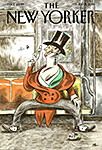
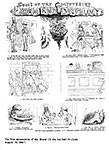

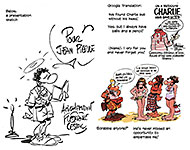
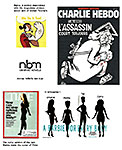
1.jpg)
2.jpg)
YrEnd1.jpg)
YrEnd2.jpg)
YrEnd3.jpg)
YrEnd4.jpg)
YrEnd5.jpg)
YrEnd6.jpg)
YrEnd7.jpg)
YrEnd8.jpg)
YrEnd9.jpg)
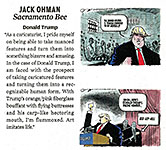
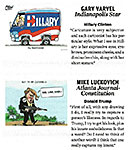
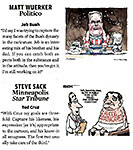
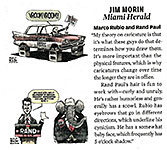

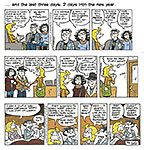
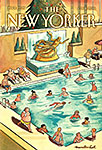
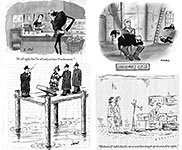
1.jpg)
2.jpg)
3.jpg)
4.jpg)
5.jpg)
6.jpg)
7.jpg)
